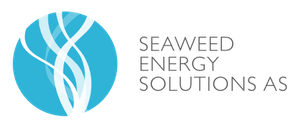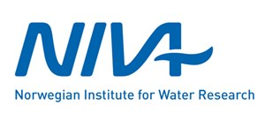KELPPRO
Kelp industrial production: Potential impacts
on coastal ecosystems
The research project KELPPRO aims to provide an integrated assessment of positive and negative impacts of industrial-scaled kelp farming on coastal environments, and is funded by The Research Council of Norway (HAVBRUK2).
Kelp are large seaweeds growing several meters tall in a growth season. The KELPPRO project will assess the complex ecological impacts and system feedbacks using dedicated field and laboratory studies, mesocosms experiments, and numerical modelling. The potential for CO2 uptake and climate mitigation will be assessed. A matrix of production scenarios combined with relevant environment information will be analyzed, evaluating consequences of kelp farming on local and regional scales for present and near future times. Guidelines for decision makers and managing agencies will be provided based on project results.
The project runs from 2017 to 2020 and is led by Norwegian Institute for Water Research (NIVA) with partners at SINTEF, Norwegian University of Science and Technology, Akvaplan-niva, Institute of Marine Research, University of Southern Denmark (SDU), and leading actors within the Norwegian kelp farming industry.
Project leader: Dr. Kasper Hancke, NIVA Oslo: (kasper.hancke@niva.no)
Latest publications:
Boldreel EH, Attard KM, Hancke K, Glud RN (2023) Microbial degradation dynamics of farmed kelp deposits from Saccharina latissima and Alaria esculenta. Mar Ecol Prog Ser 709:1-15.
https://www.int-res.com/abstracts/meps/v709/p1-15/
Bekkby T, RRG Torstensen, LAH Grünfeld, H Gundersen, S Fredriksen, E Rinde, HC Christie, M Walday, GS Andersen, MS Brkljacic, LS Neves, K Hancke (2023). Hanging gardens - comparing fauna communities in kelp farms and wild kelp forests. Mar. Sci. https://doi.org/10.3389/fmars.2023.1066101
Ricart AM, D Krause-Jensen, K Hancke, NN Price, P Masqué, CM Duarte (2022) Sinking seaweed in the deep ocean for carbon neutrality is ahead of science and beyond the ethics Environ. Res. Lett. https://iopscience.iop.org/article/10.1088/1748-9326/ac82ff
Filbee-Dexter K, Feehan CJ, Smale DA, Krumhansl KA, Augustine S, de Bettignies F, Burrows MT, Byrnes JEK, Campbell J, Davoult D, Dunton KH, Franco JN, Garrido I, SP Grace, K Hancke, LE Johnson, B Konar, PJ Moore, KM Norderhaug, A O’Dell, MF Pedersen, AK Salomon, I Sousa-Pinto, S Tiegs, D Yiu, T Wernberg (2022) Kelp carbon sink potential decreases with warming due to accelerating decomposition. PLoS Biol 20(8): e3001702. https://doi.org/10.1371/journal.pbio.3001702
Duarte, C. M., Gattuso, J.-P., Hancke, K., Gundersen, H., Filbee-Dexter, K., Pedersen, M. F., Middelburg, J. J., Burrows, M. T., Krumhansl, K. A., Wernberg, T., Moore, P., Pessarrodona, A., Ørberg, S. B., Pinto, I. S., Assis, J., Queirós, A. M., Smale, D. A., Bekkby, T., Serrão, E. A., & Krause-Jensen, D. (2022). Global estimates of the extent and production of macroalgal forests. Global Ecology and Biogeography, 31, 1422– 1439. https://doi.org/10.1111/geb.13515
Broch OJ, Hancke K and Ellingsen IH (2022) Dispersal and Deposition of Detritus From Kelp Cultivation. Front. Mar. Sci. 9:840531. doi: 10.3389/fmars.2022.840531
d’Auriac, M.A., Hancke, K., Gundersen, H. & Frigstad, H. (2021). Blue Carbon eDNA A novel eDNA method to trace macroalgae carbon in marine sediments. NIVA-rapport; 7648-2021.
Fieler R, Greenacre M, Matsson S, Neves L, Forbord S and Hancke K (2021) Erosion Dynamics of Cultivated Kelp, Saccharina latissima, and Implications for Environmental Management and Carbon Sequestration. Front. Mar. Sci. 8:632725. doi: 10.3389/fmars.2021.632725
Gundersen H, Rinde E, Bekkby T, Hancke K, Gitmark JK and Christie H (2021) Variation in Population Structure and Standing Stocks of Kelp Along Multiple Environmental Gradients and Implications for Ecosystem Services. Front. Mar. Sci. 8:578629. doi: 10.3389/fmars.2021.578629
Kasper Hancke, Ole Jacob Broch, Yngvar Olsen, Trine Bekkby, Pia Kupka Hansen, Reinhold Fieler, Karl Attard, Gunhild Borgersen, Hartvig Christie (2021) Miljøpåvirkninger av taredyrking og forslag til utvikling av overvåkingsprogram. NIVA-rapport;7589-2021
Boldreel, Emma H (2020) Benthic degradation dynamics of deposits from two kelp species: Sugar kelp (Saccharina latissima) & winged kelp (Alaria esculenta). MSc thesis. University of Southern Denmark. Inst of Biology. 01.08.2020
Torstensen, Ragnhild RG (2020) Effekter av sukkertaredyrking (Saccharina latissima) på det marine miljø: Et taredyrkingsanleggs rolle som en kunstig tareskog. MSc thesis. University of Oslo. 01.06.2020.
Broch OJ, Ellingsen IH, Hancke K (2020) Deposition of detritus from near- and off-shore kelp farm as a contribution to CO2 sequestration. AGU Ocean Sciences meeting, San Diego CA, scientific talk, 17 February 2020.
Kan tare bremse oppvarmingen? Ekspertintervjuet med Kasper Hancke, <2oC online magazine. ENERGI & KLIMA 22.01.2020.
Evankow, A., Christie, H., Hancke, K. et al. Conserv Genet (2019). Genetic heterogeneity of two bioeconomically important kelp species along the Norwegian coast. https://doi.org/10.1007/s10592-019-01162-8 [PDF]
Broch OJ, Alver MO, Bekkby T, Gundersen H, Forbord S, Handå A, Skjermo J and Hancke K (2019). The Kelp Cultivation Potential in Coastal and Offshore Regions of Norway. Front. Mar. Sci. 5:529. doi: 10.3389/fmars.2018.00529
By KELPPRO 2017-2020
Contact: kasper.hancke@niva.no at Norwegian Institute for Water Research (NIVA)
Visit Twitter for the latest KELPPRO-relatet content (click on icon).






